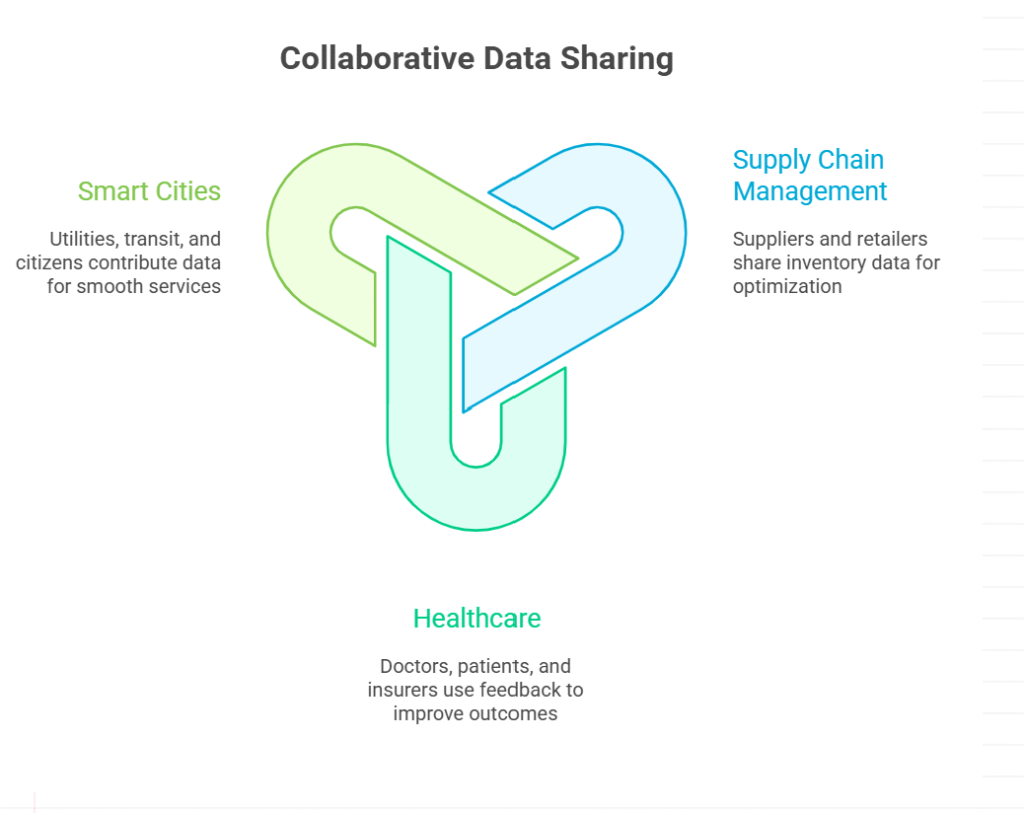A closed loop is a system where outputs are fed back as inputs, creating a cycle of continuous improvement or control. This feedback allows the system to self-correct, adapt, and maintain stability—even when things change.
Close the Loop Meaning
When someone says “close the loop,” they usually mean finishing a process, resolving an issue, or making sure feedback is acted upon. In business, it’s about not leaving things hanging. In engineering, it’s about using feedback to keep things running smoothly.
Real-Life Example
“Our customer support team always follows up after a ticket is resolved. That’s how we close the loop and make sure every client is satisfied.”
Closed Loop vs Open Loop Control: What’s the Difference?
One of the most common questions is about closed loop vs open loop control. Let’s break it down:
Open Loop Control
- No feedback.
- The system acts, but doesn’t check if the result is correct.
- Example: A basic toaster. You set the timer, and it toasts for that time—no matter what.
Closed Loop Control
- Uses feedback to adjust actions.
- The system checks the result and makes corrections.
- Example: A modern thermostat. It senses the room temperature and turns the heat on or off to maintain your set point.
User Quote
“Switching from open loop to closed loop control in our factory cut waste by 30%. The system now adjusts itself in real time.”
Why Closed Loops Matter in 2025
In a world that’s more automated, data-driven, and customer-focused than ever, a closed loop is the gold standard for efficiency and quality. Here’s why:
- Self-correction: Systems can adapt to changes and fix errors automatically.
- Continuous improvement: Feedback drives better results over time.
- Accountability: Nothing falls through the cracks—every action gets a response.
Closed Loop Payments: The Future of Transactions
You might have heard about closed loop payments—but what are they, and why are they gaining traction in 2025?
What Are Closed Loop Payments?
Closed loop payments are payment systems where funds can only be used within a specific network or ecosystem. Think of a gift card that only works at one store, or a transit card for a city’s subway system.
Benefits of Closed Loop Payments
- Lower fees: No need for third-party processors.
- Faster transactions: Money moves instantly within the network.
- Better data: Merchants get detailed insights into customer behavior.
Risks and Limitations
- Limited use: Funds can’t be spent outside the network.
- Breakage: Unused balances can go to waste.
User Tweet
“I love my coffee shop’s closed loop app. I earn rewards, pay faster, and never have to fumble for cash.”
Co-Loop: Collaboration in a Closed Loop World
The term co-loop is popping up more in 2025, especially in tech and business circles. It refers to collaborative closed loop systems—where multiple parties share feedback, data, or control to achieve a common goal.
Examples of Co-Loop Systems
- Supply chain management: Suppliers and retailers share real-time inventory data to optimize stock.
- Healthcare: Doctors, patients, and insurers use shared feedback to improve outcomes.
- Smart cities: Utilities, transit, and citizens all contribute data to keep services running smoothly.

Closed Loop in Everyday Life
Closed loops aren’t just for engineers or techies. You use them every day, often without realizing it.
Examples
- Fitness trackers: Your steps and heart rate are tracked, and the app suggests changes to your routine.
- Customer feedback: You leave a review, the company responds, and you see improvements next time.
- Learning: You take a test, get feedback, and study your weak spots.
Closed Loop vs Open Loop: Which Is Better?
It depends on the situation. Closed loop systems are great for anything that needs accuracy, adaptation, or accountability. Open loop systems are simpler and cheaper, but can’t adjust to changes or errors.
When to Use Closed Loop
- Quality control in manufacturing
- Automated climate control
- Customer service follow-up
When to Use Open Loop
- Simple, repetitive tasks
- When feedback isn’t needed or possible
How to Build a Closed Loop System
Want to implement a closed loop in your business or project? Here’s a step-by-step approach:
- Define your goal: What outcome are you trying to achieve?
- Set up measurement: How will you track progress or results?
- Create feedback channels: Make sure data flows back to the right place.
- Automate responses: Use software or processes to act on feedback.
- Review and improve: Regularly analyze results and tweak the system.
Close the Loop Meaning in Business
In business, “close the loop” means following up, resolving issues, and making sure nothing is left unfinished. It’s a mindset that builds trust and drives results.
How to Close the Loop with Customers
- Respond to every inquiry or complaint.
- Follow up after a sale or service.
- Ask for feedback—and act on it.
User Quote
“We never let a customer question go unanswered. That’s how we close the loop and keep people coming back.”
Closed Loop Payments vs Open Loop Payments
Let’s compare closed loop payments to open loop systems like credit cards or bank transfers.
| Feature | Closed Loop Payments | Open Loop Payments |
|---|---|---|
| Where you can spend | Only within the network | Anywhere |
| Fees | Lower | Higher |
| Speed | Instant | Can be delayed |
| Data insights | Detailed, network-specific | Limited |
| Flexibility | Limited | High |
The Pros and Cons of a Closed Loop
Pros
- Accuracy: Feedback ensures the system stays on target.
- Efficiency: Problems are caught and fixed quickly.
- Customer satisfaction: Issues are resolved, not ignored.
Cons
- Complexity: More moving parts to manage.
- Cost: Setting up feedback channels can be expensive.
- Limited flexibility: Especially in closed loop payments.
Closed Loop in Technology: Automation and AI
In 2025, closed loop systems are everywhere in tech. AI-powered closed loops can:
- Adjust manufacturing robots in real time
- Optimize energy use in smart buildings
- Personalize marketing based on customer feedback
The Future: Self-Improving Systems
As AI gets smarter, closed loop systems will become more autonomous—learning from every action and getting better over time.
Co-Loop: The Power of Shared Feedback
Co-loop systems are changing how teams and organizations work together. By sharing feedback and control, everyone benefits from faster learning and better results.
How to Build a Co-Loop Culture
- Encourage open communication
- Share data and insights across teams
- Celebrate improvements and learning
Closed Loop in Sustainability and the Circular Economy
“A closed loop” is also a key concept in sustainability. The goal? Waste nothing. Products are designed to be reused, recycled, or composted—creating a circular, closed loop instead of a linear “take-make-waste” model.
Examples
- Recycling programs: Materials are collected, processed, and made into new products.
- Composting: Food waste becomes fertilizer for new crops.
- Product take-back: Companies collect old products for refurbishment or recycling.
Risks and Challenges of Closed Loop Systems
No system is perfect. Here are some challenges to watch for:
- Feedback overload: Too much data can be hard to manage.
- Slow response: If feedback isn’t acted on quickly, the loop breaks down.
- Security risks: In payments or tech, closed loops can be targets for fraud.
Closed Loop in Healthcare: Better Outcomes, Faster
Healthcare is embracing closed loop systems for everything from insulin pumps to patient feedback. The result? More accurate treatments, fewer errors, and happier patients.
FAQs
Q. What does “close the loop” mean in business?
A. It means following up, resolving issues, and making sure every process or customer interaction is completed—nothing is left unfinished
Q. What’s the difference between closed loop and open loop control?
A. Closed loop uses feedback to adjust and improve; open loop does not. Closed loop is more accurate and adaptive, while open loop is simpler but less flexible.
Q. What are closed loop payments?
A. Closed loop payments are payment systems where funds can only be used within a specific network or ecosystem, like store gift cards or transit cards.
Q. What is a co-loop?
A. co-loop is a collaborative closed loop system where multiple parties share feedback and control to achieve a common goal, often seen in supply chains, healthcare, and smart cities.
Conclusion
A closed loop isn’t just a technical term—it’s a mindset for building better systems, businesses, and relationships. Whether you’re optimizing a factory, improving customer service, or designing sustainable products, closing the loop means you’re always learning, adapting, and delivering value.
CLICK HERE FOR MORE BLOG POSTS
There’s a certain weight in the words John Authers writes—not just because of what he knows, but how he shares it. His voice doesn’t just echo facts; it builds meaning. In a world overwhelmed by rushed opinions and robotic summaries, John’s writing feels… different. It feels lived-in, thoughtful, and deeply human.
Readers don’t turn to John for headlines—they come for context. They come for that rare blend of clarity, insight, and emotional depth that turns financial journalism into something closer to storytelling. His reflections on markets, geopolitics, or human behavior aren’t just readable—they’re relatable.
What sets John apart isn’t just his experience (though he has plenty of it). It’s his ability to pause, reflect, and explain the why behind the what. He writes like someone who’s been in the room where it happens—but never forgets the reader who hasn’t.
In 2025, when AI churns out articles in milliseconds, John Authers still writes like a human—and that, more than anything, is what makes his work worth reading.











